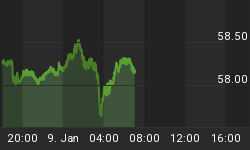Interesting charts to present today with the S&P 500 Index, which is probably a better market to follow to reflect global economy. As we are all aware, the US Dollar still remains the reserve currency of the US Dollar and with that privilege, it extends into the US stock market. As uncertainties build around the globe, money will look for a home...it may not be the prettiest home, but it is likely the securest.
The daily chart of the S&P 500 Index is shown below, with the upper 21 MA Bollinger Band above the 34 MA Bollinger Band indicates an overbought condition has been generated. Lower 21 and 34 MA Bollinger Bands have curled down, indicating at least another two weeks of sideways to upward priced action before a top is put in place...when both curl up, a top will have been put in place, so this is a very useful metric to follow. There is resistance at 2000, but a move above this and the next major level of support lies between 2070 and 2100. Full stochastics 1, 2 and 3 are shown below in order of descent, with the %K above the %D in all three instances. Positioning of the %K in stochastics 2 and 3 also indicate at least another 2 weeks of upside before any sort of top is put in place.
Figure 1
![]() Larger Image
Larger Image
The weekly chart of the S&P 500 Index is shown below, with Bollinger Bands in their proper order of alignment indicates no overbought or oversold condition has been generated at this point in time. All three lower Bollinger Bands are in close proximity to each other, with stochastics near their low range indicates that the bottom likely has been put in place and upside strength is set to continue forward...if further declines were to occur, we should be seeing that right now but we are not. This observation is very important, as it suggests an accumulation of global funds into the US stock market. Full stochastics 1, 2 and 3 are shown below in order of descent, with the %K beneath the %D in all three instances. The %K in stochastic 1 has curled up, indicating the potential for further upside. With the current trend noted in the daily chart, the bullish upside bias is starting to show contagion in the weekly chart.
Figure 2
![]() Larger Image
Larger Image
The monthly chart of the S&P 500 Index is shown below, with Bollinger Bands in their proper order of alignment indicates no overbought or oversold condition exists at this point in time. Blue boxes on the chart indicate inflection points of the lower 55 MA Bollinger Band, with the first one of 2007 indicating a prelude to the top that saw a 50% decline. This setup was in place in early 2015 which made an ominous setup for late 2015, but the potentially sharp decline did not happen. Full stochastics 1, 2 and 3 are shown below in order of descent, with the %K beneath the %D in all three instances. The %K in stochastic 1 has been beneath the %D for over 14 months, which historically has been associated with 30-50% declines. Since this has not happened, something else is going on here. With two long tailed doji's over the past two months (The last one being an impressive hammer doji), upside over the next few months could send the lower 55 MA Bollinger Band curling back down again, which would trigger a final push higher in the broad stock market indices. If the %K in stochastic 1 continues to decline for another 6-8 months, with the price staying within the current range, a 10% move lies ahead for the S&P 500 Index by year end. The pattern forming is starting to look more and more like a consolidation pattern than a sharp decline.
Figure 3
![]() Larger Image
Larger Image
The mid-term Elliott Wave count of the S&P 500 Index is shown below, with wave [X] thought to still be forming. Minimally, wave [X] could be done, but it is unlikely given the momentum of the bounce off the recent lows. Wave [X] could persist into May or June before heading higher in wave [Y] to complete the longer-term pattern, denoted in Figure 6.
Figure 4
![]() Larger Image
Larger Image
The long-term Elliott Wave count of the S&P 500 Index is shown below, with wave [X].d still forming. Once wave [X] completes, wave [Y] should continue to rise for at least 12-18 months before a top is put in place. The ultimate top for wave [Y].d is expected to be around 2350-2400 before declining in wave e. Wave e should last 2-3 years, which would represent the end of the bear market from 2000 until present. A 20 year bear market with a higher high would be the outcome, which fits with Glenn Neely's longer term Elliott Wave forecast for DOW 200,000 between 2060 and 2080. Focusing on the short-term, the S&P 500 Index is in a consolidation phase before heading higher into a longer-term top that should not be put in place until sometime between mid to late 2017. To negate this forecast, we would need to see two negative months with a downside move to 1650.
Figure 5
![]() Larger Image
Larger Image
















